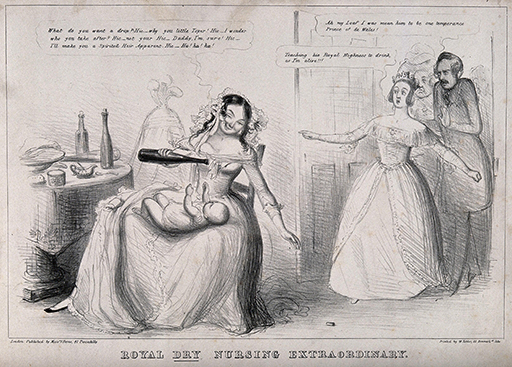2.1 Reasons for bottle feeding
You may find this surprising, as people tend to think of formula feeding as a twentieth-century development and assume that in the past all babies were breastfed, but the reasons for bottle feeding infants are as old as humanity. Maternal mortality was high until the late nineteenth century so motherless babies were not uncommon; not all mothers were able to breastfeed and then there were the infants whose circumstances required artificial or supplementary feeding. Babies who were orphaned, abandoned, concealed or ill and those with a poorly-nourished or a working mother all needed feeding. In addition, mothers who began breastfeeding could suffer from infected breasts known as ‘milk fever’, obstructions, ulcers, pain and other problems which could result in bottle feeding.
If you begin with this artefact, it becomes apparent that it really only gives us half a story; a bottle must have some form of milk. Using our original object as a starting point we can move back and forth on a timeline and investigate what babies consumed through bottles and why.
If you move backwards chronologically from our porcelain bottle, early modern babies whose mothers could not feed them were often given to wet nurses, usually women of a lower socio-economic status with available breast milk. This was considered problematic, as in this period breast milk was thought to be a form of bodily fluid which could confer characteristics or morals and parents were often worried about the morality of the wet nurse. This cartoon shows that such anxieties were still present in Victorian times.


